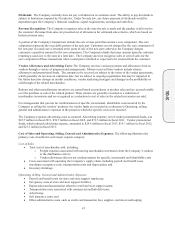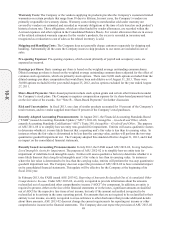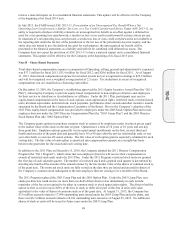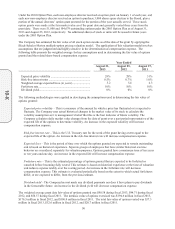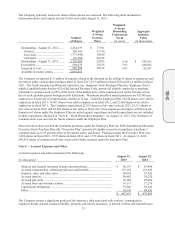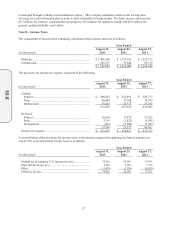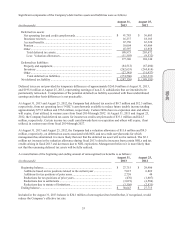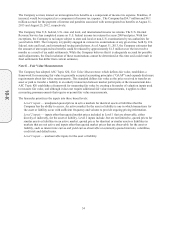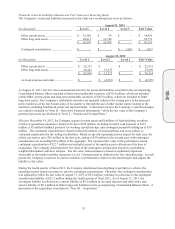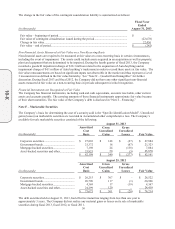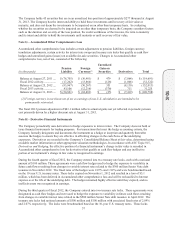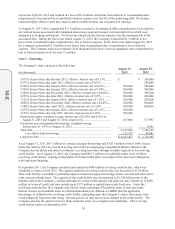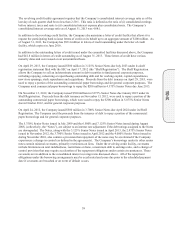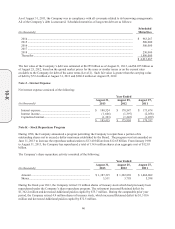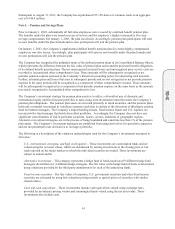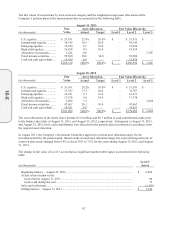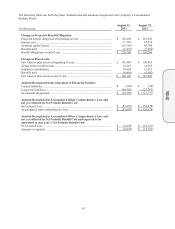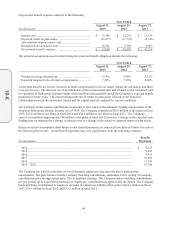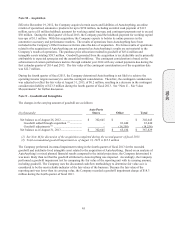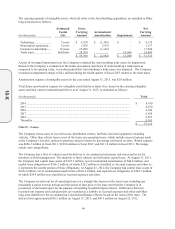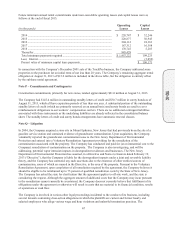AutoZone 2013 Annual Report Download - page 119
Download and view the complete annual report
Please find page 119 of the 2013 AutoZone annual report below. You can navigate through the pages in the report by either clicking on the pages listed below, or by using the keyword search tool below to find specific information within the annual report.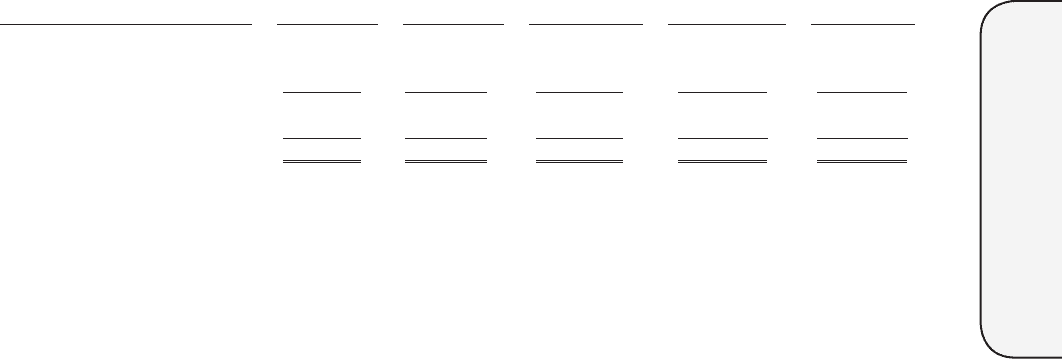
57
The Company holds 45 securities that are in an unrealized loss position of approximately $277 thousand at August
31, 2013. The Company has the intent and ability to hold these investments until recovery of fair value or
maturity, and does not deem the investments to be impaired on an other than temporary basis. In evaluating
whether the securities are deemed to be impaired on an other than temporary basis, the Company considers factors
such as the duration and severity of the loss position, the credit worthiness of the investee, the term to maturity
and its intent and ability to hold the investments until maturity or until recovery of fair value.
Note G – Accumulated Other Comprehensive Loss
Accumulated other comprehensive loss includes certain adjustments to pension liabilities, foreign currency
translation adjustments, certain activity for interest rate swaps and treasury rate locks that qualify as cash flow
hedges and unrealized gains (losses) on available-for-sale securities. Changes in Accumulated other
comprehensive loss, net of tax, consisted of the following:
(in thousands)
Pension
Liability
Foreign
Currency(1)
Unrealized
Gain on
Securities Derivatives
Total
Balance at August 27, 2011 ...
.
$ (76,705) $ (36,401) $ 479 $ (7,064) $ (119,691)
Fiscal 2012 activity ................
.
(17,262) (13,866) (128) (1,066) (32,322)
Balance at August 25, 2012 ...
.
(93,967) (50,267) 351 (8,130) (152,013)
Fiscal 2013 activity ................
.
43,106 (12,216) (376) 711 31,225
Balance at August 31, 2013 ...
.
$ (50,861) $ (62,483) $ (25) $ (7,419) $ (120,788)
(1) Foreign currency is not shown net of tax as earnings of non-U.S. subsidiaries are intended to be
permanently reinvested.
The fiscal 2013 pension adjustment of $43.1 million reflects actuarial gains not yet reflected in periodic pension
cost primarily driven by a higher discount rate at August 31, 2013.
Note H – Derivative Financial Instruments
The Company periodically uses derivatives to hedge exposures to interest rates. The Company does not hold or
issue financial instruments for trading purposes. For transactions that meet the hedge accounting criteria, the
Company formally designates and documents the instrument as a hedge at inception and quarterly thereafter
assesses the hedges to ensure they are effective in offsetting changes in the cash flows of the underlying
exposures. Derivatives are recorded in the Company’s Consolidated Balance Sheet at fair value, determined using
available market information or other appropriate valuation methodologies. In accordance with ASC Topic 815,
Derivatives and Hedging, the effective portion of a financial instrument’s change in fair value is recorded in
Accumulated other comprehensive loss for derivatives that qualify as cash flow hedges and any ineffective
portion of an instrument’s change in fair value is recognized in earnings.
During the fourth quarter of fiscal 2012, the Company entered into two treasury rate locks, each with a notional
amount of $100 million. These agreements were cash flow hedges used to hedge the exposure to variability in
future cash flows resulting from changes in variable interest rates related to the $300 million Senior Note debt
issuance in November 2012. The fixed rates of the hedges were 2.07% and 1.92% and were benchmarked based
on the 10-year U.S. treasury notes. These locks expired on November 1, 2012 and resulted in a loss of $5.1
million, which has been deferred in Accumulated other comprehensive loss and will be reclassified to Interest
expense over the life of the underlying debt. The hedges remained highly effective until they expired, and no
ineffectiveness was recognized in earnings.
During the third quarter of fiscal 2012, the Company entered into two treasury rate locks. These agreements were
designated as cash flow hedges and were used to hedge the exposure to variability in future cash flows resulting
from changes in variable interest rates related to the $500 million Senior Note debt issuance in April 2012. The
treasury rate locks had notional amounts of $300 million and $100 million with associated fixed rates of 2.09%
and 2.07% respectively. The locks were benchmarked based on the 10-year U.S. treasury notes. These locks
10-K


